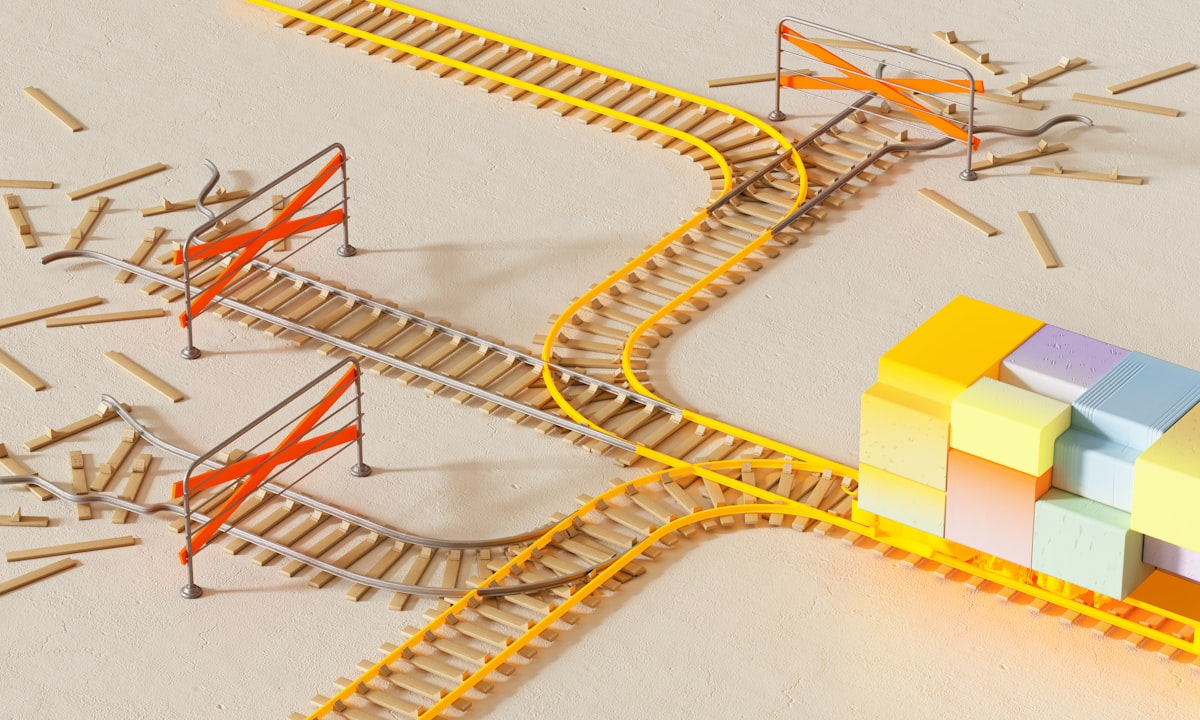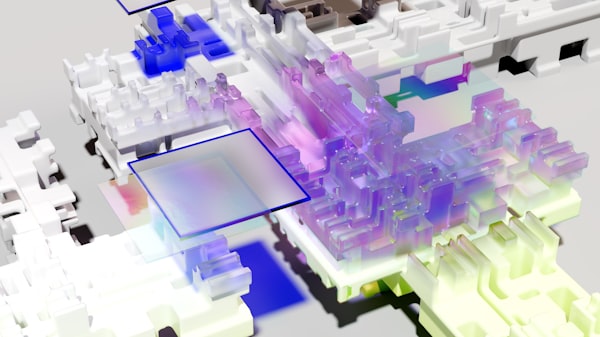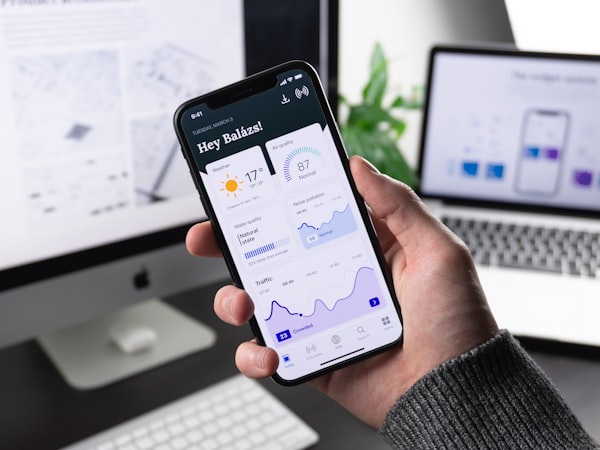1. Understanding the Evolution of Web Design: A Brief Historical Overview
Before we gaze into the crystal ball to explore the sparkly future of web design, let's take a brief - yet incredibly dramatic - journey back in time. Picture it: The 1990s, a wild age of chunky computers and screeching dial-up tones. In this prehistoric era of the internet, web design was the digital equivalent of cave paintings, with static HTML pages and hyperlinks being the height of sophistication. Nostalgic much?
Then, lo and behold, came the glorious age of CSS in the late 90s, which allowed web designers to separate content from design. This was like inventing fire in the world of web design! We went from rudimentary 'digital stone' structures to comparatively 'fancy huts' of designs. We bet there was a lot of high-fiving in nerdy coding cubicles around the world!
Flash (RIP) entered the scene around the turn of the millennium, promising an interactive utopia but delivering more of a frustrating labyrinth of load times, incompatibilities, and security issues. Remember the time when we thought bouncing navigation buttons were the pinnacle of user engagement? Oh, how quaint!
As we rolled into the era of Web 2.0, we saw the rise of minimalism, responsive design, and user-centered aesthetics. Content Management Systems like WordPress started reigning supreme. We went from making 'fancy huts' to constructing 'high-rise digital condos.'
And here we are now, cruising into the future, with web design evolving at the speed of Elon Musk's Hyperloop. But before we get too caught up in the pixel-laden magic of the forthcoming design innovations, it's crucial to remember our roots. Understanding where we've come from is invaluable in predicting where we're headed - unless we've time-traveled, and in that case, spoilers!
Stay tuned, fellow internet explorers, because we're about to delve into the fascinating world of the future of web design. Trust us, it's going to be a ride wilder than any coding caffeine-fueled all-nighter you've ever pulled. And remember, no matter how advanced web design becomes, Comic Sans should stay in the 90s where it belongs!
2. Variable Fonts: The Future of Typography in Web Design
Now, prepare yourself for an exciting revelation! The future of web design may not be solely about flashy new technologies like AR or AI. It could very well be...drumroll, please...fonts! Yes, dear reader, you heard it right. Good old-fashioned typography is getting a space-age makeover, with a clever little thing called 'Variable Fonts.'
Variable fonts are the design world's equivalent of the Swiss Army knife. Instead of carrying a hefty load of multiple font files for different styles and weights, variable fonts condense everything into one single, streamlined file. Picture it as the Hermione Granger of fonts, using an 'Undetectable Extension Charm' to fit everything inside a single, magical suitcase.
Here's the nifty part. With variable fonts, you can smoothly transition between different styles, widths, weights, and more. This means web designers can play around like mischievous design elves, creating a seamless user experience that adjusts to different screen sizes, resolutions, and user settings. Variable fonts are responsive, versatile, and frankly, just plain cool.
They're also a gift from the SEO gods! By reducing the number of HTTP requests and decreasing the load time (variable fonts = less data = faster loading), variable fonts are about to become Google's new best friend. Let's not forget, Google does love speed.
As we hurtle forward into the great unknown of future web design, expect to see variable fonts everywhere, from the cutting-edge digital landscapes of Google Fonts to the latest WordPress themes. It's a brave new world, my fellow web wanderers, and it's going to be written in variable fonts.
Remember this, though. While the future of web design may involve advanced technologies that sound like they've been ripped straight from a sci-fi novel, sometimes it's the simplest changes that make the biggest impact. Or, as we like to say, sometimes the font matters just as much as the future!
3. Augmented Reality (AR) and Virtual Reality (VR): Revolutionizing User Experience
Buckle up, tech aficionados, because we're about to take a thrilling ride into the realm of Augmented Reality (AR) and Virtual Reality (VR). In the wise words of Willy Wonka, "We are the music makers, and we are the dreamers of dreams." Well, in this case, the 'dreams' are immersive web experiences, and the 'music' is the symphony of cutting-edge technologies revolutionizing the digital landscape.
AR and VR are no longer the fancy playthings of gaming enthusiasts or sci-fi movie directors. They're leaping off the big screen and onto our browsers, bringing a whole new dimension to the term 'interactive web design.' These technologies are turning the flat, 2D spaces of the web into 3D wonderlands, so get ready to dive down the virtual rabbit hole!
In the VR corner, we have the likes of WebVR, an open standard that makes it possible to experience VR in your browser. Remember when navigating a website was just scrolling and clicking? Ha, how quaint! Now, we can literally 'walk' through a site. You might want to keep a map handy, just in case!
On the AR side of things, web designers are donning their wizard hats to create augmented experiences that overlay digital information onto the physical world. Imagine shopping for furniture and seeing how a couch looks in your living room, right through your browser. It's like having a little elf whispering in your ear, "This loveseat would look stellar next to your coffee table!"
And let's not forget the SEO implications! As AR and VR become more mainstream, search engines will likely adjust their algorithms to favor sites that incorporate these technologies. Start considering how to design immersive experiences for your users now, and you might just find yourself on the first page of Google sooner than you think.
As we boldly march into this brave new world, the lines between reality and the digital realm blur. So, strap on your virtual jetpacks and AR goggles, because the future of web design is not just on the horizon – it's in a whole other dimension! In the meantime, if anyone figures out how to create a VR simulation of a world where every website is SEO optimized, do let us know. We're all ears!
4. Artificial Intelligence (AI) in Web Design: Predictions for the Next Decade
Dear denizens of the digital dimension, have you met our friend, AI? The prodigy of the tech world, AI is like the Hermione Granger of web design, always coming up with clever solutions and generally being a know-it-all. AI isn't just about friendly chatbots or recommendations that border on the uncanny; it's the unsung hero that's steadily transforming the way we design and experience the web.
Now, we're not suggesting that robot overlords will take over our jobs as web designers (though, wouldn't that free up some time for a long overdue game of D&D?). Rather, AI will play a supportive role, taking over repetitive tasks, providing actionable insights, and lending a hand with all things data.
AI can be your personal assistant in creating stunning websites. Tools like The Grid and Firedrop leverage AI's genius to automate web design, making the process faster and more efficient. Just feed them some content, sit back, relax, and watch the magic unfold. Trust us, it's like watching Gandalf conjure up a website out of thin air!
The future of web design with AI also heralds the rise of predictive design. Instead of guessing what users want, AI can analyze data, track behavior, and predict what users will likely do next. It's like having a crystal ball that shows you how to create the most engaging and user-friendly design. If that doesn't scream 'next-level UX,' we don't know what does!
What about SEO, you ask? Here's where AI truly shines. With tools like Alli AI, you can supercharge your SEO efforts, from optimizing your site to building quality backlinks. Remember, Google's algorithm loves a smart, data-driven approach - just like Hermione!
As we peer into the future, the line between web design and AI continues to blur. It's a symbiotic relationship, like Sherlock and Watson, each helping the other to reach new heights of innovation. So, here's to the next decade of AI in web design. May it be as magical as a ride on the Hogwarts Express, as exciting as a Quidditch match, and as enlightening as a Defence Against the Dark Arts class with Professor Dumbledore. Cheers!
5. The Role of 5G in Shaping the Future Web Experience
Let's talk 5G, folks. No, not five genies or five giraffes. 5G as in the fifth generation of wireless technology. It's more than just a speed boost for your mobile devices; it's a complete game-changer for the future of web design and experience. It's like a shot of espresso in your morning coffee - it takes something already good and injects it with a whole lot of 'WOW'!
As we step into the dazzling world of 5G, we're bidding adieu to sluggish load times, buffering nightmares, and the eternal 'just one more second' loading screen. With 5G, we're looking at lightning-fast data speeds, low latency, and improved connectivity. It's like getting a VIP, front-row seat at the digital concert of the century!
For web designers, this means more creative freedom, much like a bird set free from its cage (cue dramatic music). With the power of 5G, you can now incorporate high-resolution images, complex animations, and even immersive AR and VR experiences without worrying about slow load times. The bandwidth boost is like a golden ticket to Willy Wonka's Chocolate Factory, offering endless possibilities for exploration and innovation.
And what about our dear friend, SEO? Well, Google always loves a fast and responsive website. As 5G becomes the norm, search engines will likely prioritize websites that leverage its speed and reliability to provide a seamless user experience. This means it's time to dust off your SEO cap and start optimizing for 5G!
In a nutshell, the future of web design with 5G is like stepping into a Lamborghini after years of driving a rusty old hatchback. It's going to be faster, smoother, and oh-so thrilling. So, strap in, my digital daredevils, because the 5G rollercoaster has only just begun its wild ride. And remember, in the fast lane of the information superhighway, there's no such thing as too much speed!
6. The Impact of Blockchain Technology on Web Design
Ladies and gentlemen, hobbits and elves, allow us to introduce a game-changing technology straight from the crypt(ocurrency) - the mighty Blockchain! If you're wondering how a technology synonymous with Bitcoin can possibly play a role in web design, hold onto your magic rings, because we're about to embark on an epic journey into the future of the digital realm.
At its heart, blockchain is all about decentralization, transparency, and security. It's like a magic ledger that records every transaction across a network of computers. Picture a horde of meticulous dwarves, each keeping a detailed account of every coin ever mined, and you're getting close.
Now, how does this tech magic affect web design? Let's start with transparency. Blockchain's ability to track and verify every change on a website opens up new possibilities for user interaction. Imagine a site where users could vote on design changes, creating a democratic web experience. Sounds as thrilling as Bilbo's unexpected journey, doesn't it?
Then, we have security. With blockchain's cryptographic protection, we could see the rise of websites that are virtually hack-proof. It's like having Gandalf guarding your site, exclaiming, "You shall not pass!" to all the pesky digital trolls out there.
Blockchain also paves the way for a new form of SEO. In a blockchain-based web (often called Web 3.0), search engine algorithms might prioritize sites based on their transparency, user engagement, and security features. It's time to add 'Blockchain SEO wizard' to your LinkedIn skills, folks!
Just like the One Ring, blockchain holds enormous power. It has the potential to reshape the digital landscape, making the web more democratic, secure, and transparent. So, gear up, fellow web design adventurers, because the era of blockchain is dawning. And remember, as in Middle-earth, so too in web design - even the smallest person can change the course of the future!
7. Accessibility Advancements: Making the Web Inclusive for All
Gather round, web voyagers, as we set sail on the ship of inclusivity, heading for the glorious land of accessible web design. In this digital era, the web should be a playground for all, not just those with the latest gadgets, fastest connections, or perfect vision. That's where the heroes of accessibility come in, capes flying and HTML code at the ready!
The advancements in web accessibility are nothing short of a superheroic feat. With the power of WAI-ARIA, a set of guidelines designed to make web content more accessible, web designers are turning the tide for users with disabilities. It's like giving Daredevil a digital guide dog, helping him navigate the intricate alleyways of the internet.
And it's not just about aiding the visually impaired. Innovations like voice recognition technology, improved closed captioning, and adaptive color schemes are making the web a friendlier place for everyone. It's like the Avengers of web design have assembled, each bringing their unique superpowers to create a truly inclusive internet.
Now, what does our old pal SEO think about all this? Well, Google is as giddy as Tony Stark in a tech convention when it comes to accessible web design. Websites that follow accessibility guidelines are rewarded with improved search rankings, more organic traffic, and a broader user base. So, by embracing accessibility, you're not just being a web superhero, you're also being an SEO genius. How's that for a double whammy?
As we venture forth into the future of web design, remember this: The internet is a wild, wonderful place, but only when it's accessible to all. By embracing these advancements in accessibility, we can ensure that everyone gets a ticket to ride on the digital express. After all, the future of web design is for everyone. And to all the web accessibility heroes out there, we salute you. Keep on making the web a better place, one accessible website at a time!
8. Responsive Design in a Multi-Device Era: The Future is Flexible
Welcome, dear digital wayfarers, to the bustling, ever-changing metropolis of Responsive Design. It's like a giant, interactive Transformer, shifting and adapting to fit every screen size, from the tiniest smartwatch to the grandest 4K TV. The future of web design is not just big, bold, and beautiful - it's also flexible!
In this multi-device era, our digital lives are no longer confined to the four corners of a desktop monitor. We're a restless, roving band of explorers, journeying through the virtual world via smartphones, tablets, laptops, and even smart fridges (because who doesn't want to browse the latest memes while grabbing a midnight snack?).
Responsive design is like a virtual yoga master, bending and stretching to create an optimal viewing experience on any device. It's about ensuring your site is as versatile as a circus contortionist, able to perform on any stage, big or small.
And here's the cherry on top. Our friendly neighborhood search engine, Google, absolutely adores responsive design. With their mobile-first indexing approach, having a responsive website is no longer just a nice-to-have; it's a must-have for any SEO-savvy webmaster. Just think of it as doing the cha-cha with Google - you've got to stay in step!
Looking ahead, we see a future where responsive design will not just be about adjusting to different screen sizes but also to different user environments and preferences. Imagine a website that adapts its layout based on the time of day, your current location, or even your mood. Sounds as exciting as riding a hoverboard on Mars, doesn't it?
In the end, the goal of web design, both now and in the future, is to create a user experience that's as seamless as a perfect pirouette. With responsive design leading the way, we're well on our way to a future where every web journey is a joyride. So, gear up, fellow netizens, because the future is here, and it's flexible!
9. Voice User Interface (VUI): The Next Frontier in Web Navigation
Ahoy, web wanderers! Get ready to set your sights (or rather, voices) on the next big thing in web navigation - Voice User Interface, aka VUI. It's like having a charming digital butler at your beck and call, ready to guide you through the vast corridors of the internet with just a simple voice command.
Remember the olden days when we had to actually type to search? Quaint, right? With the advent of smart speakers and voice assistants like Amazon's Alexa, Google's Assistant, and Apple's Siri, we're entering a hands-free era. It's like a Jedi using the Force to navigate the web. "Alexa, search for the best Star Wars memes!"
VUI is transforming web design, placing an emphasis on conversational interaction. It's not just about looking good anymore; your website needs to sound good too. Think of it as composing a symphony, with each voice command playing a crucial note in the harmonious user experience.
And what does this mean for SEO? Well, voice searches are typically more conversational and question-based. So, webmasters, it's time to sprinkle some of those long-tail keywords and natural language phrases into your content. It's like serving a delicious linguistic lasagna to satisfy the taste buds of the search engines. Bon appétit!
Looking into our crystal ball, we see a future where VUI is an integral part of every web experience. With advancements in AI and machine learning, we might even have personalized voice assistants that adapt to individual speech patterns and preferences. Imagine a web that doesn't just listen but truly understands you.
In conclusion, my fellow web astronauts, VUI is more than just a fad - it's the new frontier in web navigation. So, tune up those vocal cords and let your voice guide the way. After all, the future of web design is not just seen; it's heard!
10. Preparing for the Future: Essential Skills for the Next-Generation Web Designer
Alright, future Picassos of the pixel world, gather round. It's time to map out the skills you'll need to conquer the exciting terrain of future web design. With tech evolving faster than a speedy superhero, it's crucial to keep your skillset as sharp as Wolverine's claws and as adaptable as Mystique.
First up, mastering the art of responsive and adaptive design is more important than ever. As we've seen, the web of the future is a shapeshifter, bouncing from device to device, screen to screen. As a designer, you need to be an agile acrobat, flipping effortlessly between different design scenarios.
Next, let's talk about AI and machine learning. Remember when we said AI isn't taking your job? Well, it's not, but it will be your co-worker. So, get comfortable with AI tools that can streamline your workflow and free up your time for more creative pursuits, like pondering the mysteries of the universe or drawing epic doodles.
In our multi-device era, UX/UI design is as crucial as a superhero's cape. A deep understanding of user psychology and behavior can help you design experiences that resonate with users, ensuring they'll return to your site like moths to a flame (but, you know, in a good way).
Don't forget about blockchain, 5G, and VUI. Understanding these emerging technologies and how they can be leveraged in web design is like having a secret weapon in your utility belt. Plus, it's bound to impress at networking events.
Lastly, accessibility should be your guiding star. The future of web design is inclusive, and having a keen eye for accessibility will make you a true champion of the digital realm.
As for SEO, think of it as the invisible thread that weaves through all these skills. As technology evolves, so do the search algorithms. Staying on top of the latest SEO trends is not just a nice-to-have skill; it's a must-have.
So, there you have it, digital design dynamos - your roadmap for the future. As you continue your journey, remember that the most important skill of all is a passion for learning. With the right mindset and these essential skills, the future of web design is yours for the taking. Now, go forth and conquer!








